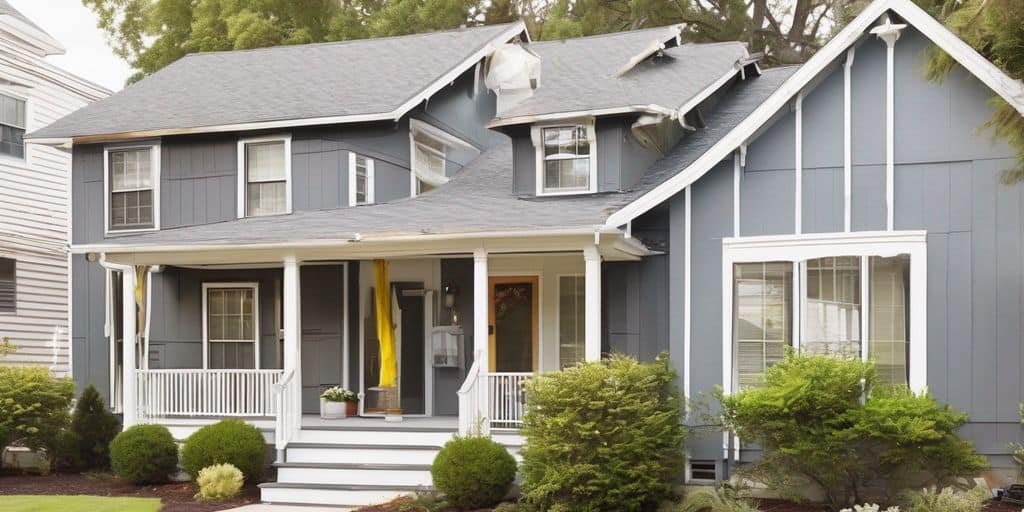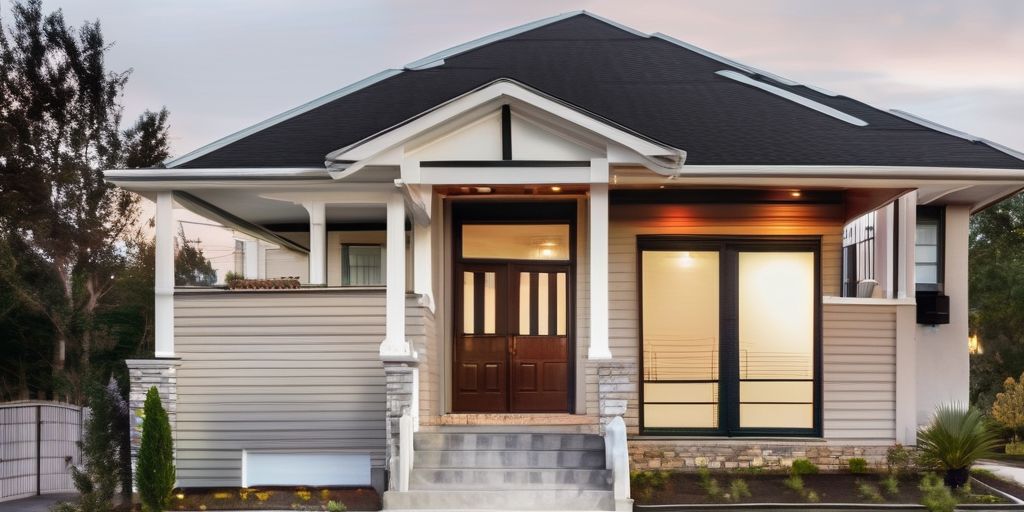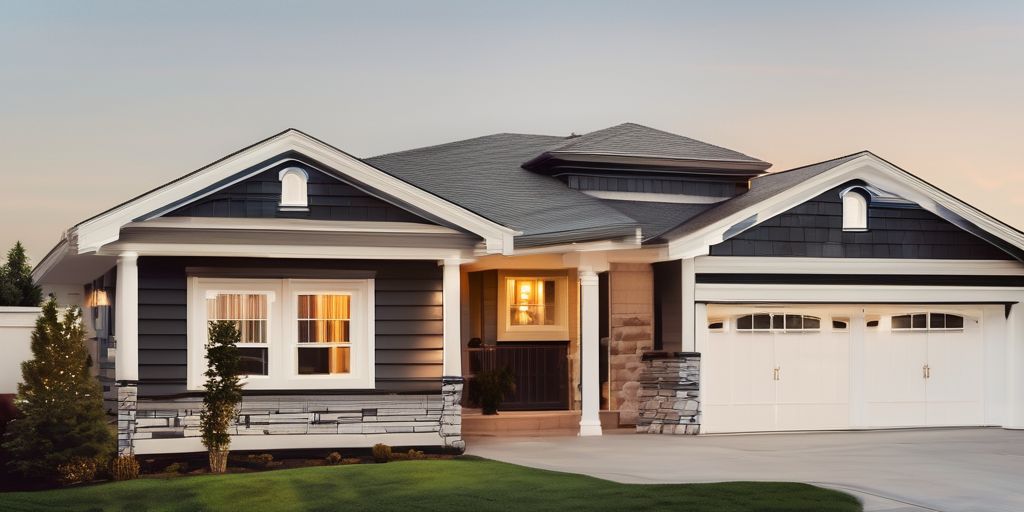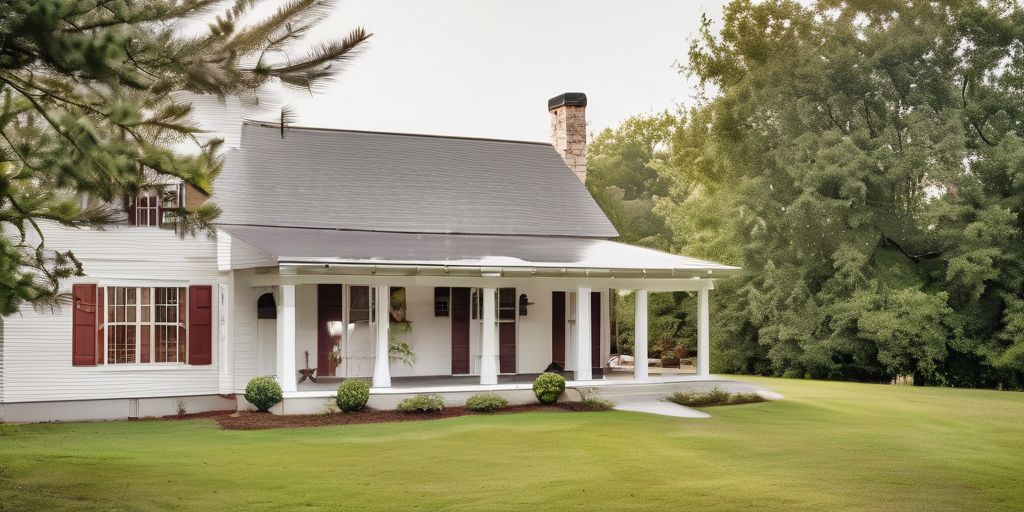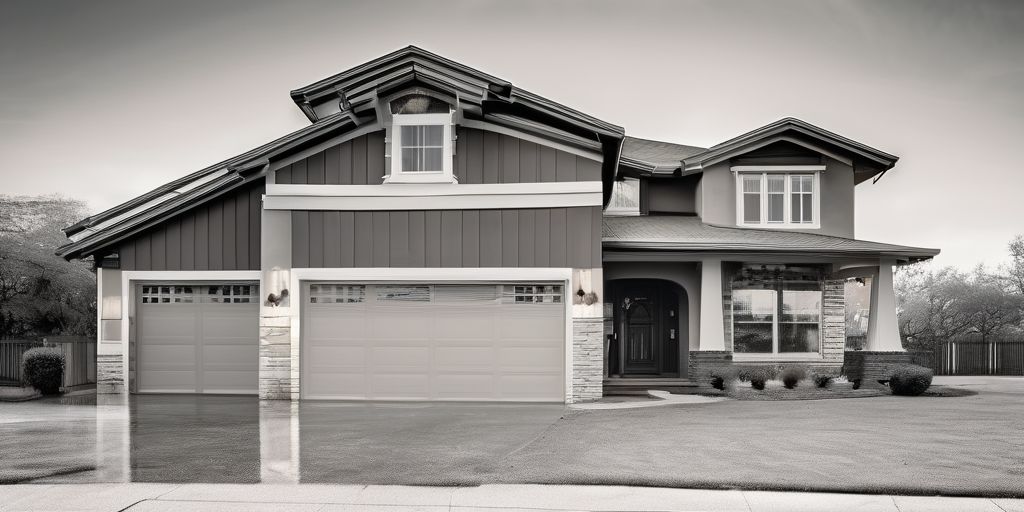Maintaining your home’s spray-painted exterior is crucial for preserving its aesthetic appeal and structural integrity. A well-maintained exterior not only enhances curb appeal but also protects your home from the elements. This article provides a comprehensive guide on how to prepare for spray painting, choose the right materials, apply proper techniques, and maintain your exterior through various seasons. By following these steps, you can ensure a long-lasting and visually appealing finish.
Key Takeaways
- Proper preparation, including thorough cleaning and making necessary repairs, is essential for a successful spray painting project.
- Selecting high-quality paint and the right equipment can make a significant difference in the durability and appearance of the paint job.
- Consistent technique, such as maintaining a consistent distance and using smooth, even strokes, is crucial for achieving a professional finish.
- Regular maintenance, including cleaning and touch-ups, helps extend the life of your exterior paint.
- Avoid common mistakes like skipping surface preparation and ignoring weather conditions to ensure a long-lasting paint job.
Preparing Your Home for Spray Painting
Cleaning the Exterior Thoroughly
Before you start, it’s essential to clean the entire exterior surface. Use a pressure washer and a suitable cleaning solution to remove dirt, mildew, and any loose paint. Make sure to clean areas like eaves and soffits as well. This step ensures that the paint adheres properly and lasts longer.
Making Necessary Repairs
Inspect your home’s exterior for any damage. Repair cracks, holes, or any other imperfections. This not only improves the final look but also helps in avoiding overspray. Use quality fillers and allow them to dry completely before moving on to the next step.
Protecting Surrounding Areas
To prevent paint from getting on surfaces you don’t want to be painted, cover them with plastic or drop cloths. Move outdoor furniture, grills, and other items away from the painting area. Tape off any trim and cover windows and shrubs. This preparation will save you a lot of cleanup time later.
Proper preparation is key to a successful spray painting project. Taking the time to clean, repair, and protect your home will ensure a smooth and lasting finish.
Choosing the Right Paint and Equipment
Selecting Quality Paint
Choosing the right paint is crucial for a long-lasting finish. High-quality paint not only provides better coverage but also withstands weather conditions more effectively. Look for paints that are specifically designed for exterior use and offer UV protection. Consider the type of surface you’re painting, as different materials may require different types of paint.
Picking the Right Sprayer
Selecting the right sprayer can make a significant difference in the outcome of your project. Options like Graco, Magnum, or TrueCoat paint sprayers are popular choices. When choosing a sprayer, consider the size of the area you’ll be painting and the type of paint you’ll be using. A wider spray pattern is ideal for large surfaces, while a narrower size works better for smaller areas.
Gathering Essential Tools
Having the right tools on hand is essential for a smooth painting process. Here’s a list of must-have items:
- Spray tips: Choose a wider spray pattern for large surfaces and a narrow size for smaller areas.
- Empty buckets: You’ll need at least two for priming the sprayer and cleanup.
- Stir sticks: Essential for mixing your paint thoroughly.
- Paint strainer bag: Helps prevent tip plugs and provides a better finish.
- Tarps, drop cloths, or plastic sheeting: Protects surrounding areas from overspray.
- Masking tape: Useful for covering areas you don’t want to paint.
- Paint brush: Handy for touch-ups and detailed work.
Safety first: Always wear protective gear and ensure proper ventilation when spray painting. This not only protects you but also helps in achieving a better finish.
Proper Techniques for Spray Painting
Spray painting your home’s exterior can be a rewarding project if done correctly. Here are some essential techniques to ensure a smooth and even finish.
Maintaining a Consistent Distance
Keeping a consistent distance between the sprayer and the surface is crucial. Maintain a distance of 10-12 inches to avoid uneven application and drips. This helps in achieving a uniform coat and prevents the paint from pooling in certain areas.
Using Smooth, Even Strokes
When spray painting, use smooth and even strokes. Start moving the sprayer before you pull the trigger and release the trigger before you stop moving. This technique helps in avoiding heavy spots and ensures an even distribution of paint.
Overlapping for Full Coverage
To ensure full coverage, overlap each pass by about 50%. This technique helps in covering any missed spots and provides a more professional finish. Combining spray and brush techniques ensures a durable and attractive finish, maximizing the efficiency and quality of your exterior paint job.
Remember, even the best spray painting techniques require a lot of preparation and patience. Follow these tips to give your home the lasting makeover it deserves.
Seasonal Maintenance Tips
Maintaining your home’s spray-painted exterior is crucial for preserving its beauty and longevity. Here are some seasonal maintenance tips to keep your exterior looking fresh and vibrant year-round.
Regular Cleaning Routine
A consistent cleaning routine is essential. Wash your house regularly with a detergent, a soft-bristled brush, and a hose. This helps remove dirt, grime, and other contaminants that can degrade the paint over time.
Touching Up Damaged Areas
Inspect your exterior for chips, cracks, and rough patches. Touch up these areas promptly to prevent further damage. Keeping your paint job in good condition will save you countless dollars and hours of effort down the road.
Clearing Vegetation and Debris
Clear vegetation like vines and moss off of your exterior. Overgrown plants can trap moisture against the paint, leading to damage. Additionally, keep gutters clear to prevent water overflow that can harm your paint.
A good, well-applied paint job utilizing high-quality paints will save you countless dollars and hours of effort down the road.
Common Mistakes to Avoid
When spray painting your home’s exterior, avoiding common mistakes can save you time, money, and effort. Here are some pitfalls to watch out for:
Skipping Surface Preparation
Proper surface preparation is crucial for a successful paint job. Skipping this step can lead to poor adhesion and an uneven finish. Make sure to:
- Clean the surface thoroughly
- Remove any loose paint
- Sand rough areas
- Apply a primer if necessary
Ignoring Weather Conditions
Weather plays a significant role in the outcome of your painting project. Painting in unsuitable conditions can cause issues like blistering and lap marks. Always:
- Check the weather forecast
- Avoid painting in direct sunlight
- Steer clear of windy days
- Ensure the surface is dry
Using the Wrong Type of Paint
Choosing the right paint is essential for durability and appearance. Using the wrong type can result in peeling, fading, and other problems. Be sure to:
- Select paint designed for exterior use
- Consider the material of your home’s exterior
- Test colors in natural light
Reducing overspray in spray painting in Milton: avoid common mistakes like inadequate masking and incorrect material use. Achieve a clean, professional finish with consistent coating and rapid drying technology.
When to Seek Professional Help
Complex or Large Projects
For large-scale or intricate spray painting projects, it might be best to call in the experts. Professional painters have the experience and tools necessary to handle complex tasks efficiently. Consider seeking help if:
- The project involves multiple stories or hard-to-reach areas.
- You need a high-quality finish that requires specialized techniques.
- The job demands extensive preparation and cleanup.
Lack of Proper Equipment
Not everyone has access to the right equipment for spray painting. If you find yourself lacking essential tools, hiring a professional can save you time and effort. Key equipment includes:
- High-quality sprayers
- Safety gear
- Scaffolding or ladders
Ensuring Long-Lasting Results
A professional touch can make a significant difference in the longevity of your paint job. Experts know how to apply protective coatings and perform touch-ups that ensure your exterior remains in top condition. Regular maintenance advice for spray painted surfaces in Guelph emphasizes quality coatings, professional touch-ups, and finding trusted painters.
For the best results, consider professional help to ensure your home’s exterior looks great and lasts longer.
Safety Tips for Spray Painting
Spray painting can be a rewarding way to refresh your home’s exterior, but it’s crucial to prioritize safety. Here are some essential tips to keep in mind:
Wearing Protective Gear
Under no circumstances should you use a paint sprayer without the proper protective gear. Use a mask or respirator while spraying, protect eyes with goggles, and make sure that your hair is covered. Wear a painter’s suit to reduce exposure to skin.
Ventilating the Area
Vapors can be harmful; avoid continuous breathing of spray mist by spraying outside whenever possible. When spraying inside, open windows and doors to ensure fresh air entry during application and drying. Wearing respiratory protection is also helpful — most hardware stores sell a variety of painting masks.
Handling Equipment Safely
Paint sprayers are extremely powerful machines that can cause harm if improperly used. Follow manufacturer’s directions at all times, and never point a sprayer at yourself or anyone else while in use. Always refer to the specific instructions and safety procedures for the spray equipment you are using.
Safety Notice: Whenever operating spray equipment, take proper safety precautions, stay alert, and be mindful of potential hazards. Wear protective gear such as gloves, safety glasses/goggles, spray sock (hood), hat, proper footwear, dust masks, and respirators. Make sure there is adequate ventilation. If you’re painting in the vicinity of appliances, turn them off.
When it comes to spray painting, safety is paramount. Always wear protective gear, ensure proper ventilation, and follow all manufacturer guidelines. For more detailed tips and professional services, visit our website. Your safety and satisfaction are our top priorities!
Conclusion
Maintaining your home’s spray-painted exterior may seem like a daunting task, but with the right approach and regular upkeep, it can be a rewarding experience. Remember, the key to a long-lasting and visually appealing paint job lies in thorough preparation and consistent maintenance. By following the tips and guidelines provided, such as washing your house regularly, making necessary repairs, and keeping vegetation and gutters clear, you can ensure that your home’s exterior remains beautiful and protected for years to come. Happy painting!
Frequently Asked Questions
How important is cleaning the exterior before spray painting?
It’s crucial to clean the exterior thoroughly before spray painting to ensure the paint adheres properly. Any dirt, mildew, or peeling paint can prevent the new paint from sticking, leading to a poor finish.
What kind of maintenance should I perform on my spray-painted exterior?
Regular maintenance includes washing the house with detergent and a soft-bristled brush, touching up chips and cracks, clearing vegetation, and keeping gutters clear. For wooden siding, regular sealing is also recommended.
How long does exterior paint usually last?
The longevity of exterior paint depends on various factors, including the quality of the paint, the surface preparation, and the environmental conditions. On average, a good exterior paint job can last between 5 to 10 years.
Can I spray paint my house in any weather?
No, it’s essential to consider weather conditions. Avoid painting on windy days to prevent overspray and on rainy days or in high humidity, as it can affect the paint’s drying process. Ideally, choose a dry, mild day for spray painting.
What should I do if I don’t have the proper equipment for spray painting?
If you lack the necessary equipment or experience, it’s advisable to seek professional help. Professionals have the right tools and expertise to ensure a high-quality and long-lasting paint job.
Are there any safety tips I should follow while spray painting?
Yes, always wear protective gear, ensure proper ventilation, and handle the equipment safely. Cover any surfaces not meant to be painted and keep the area free from obstacles to avoid accidents.

